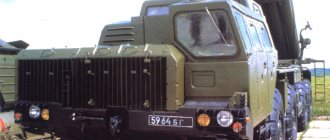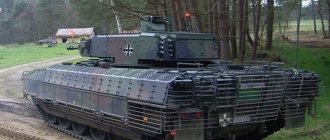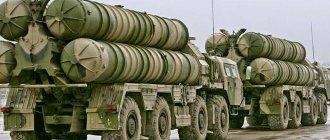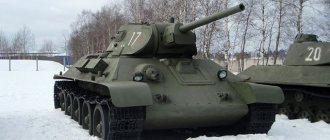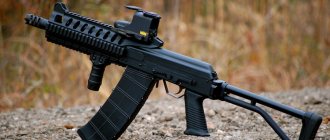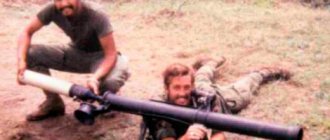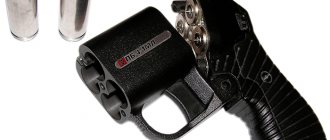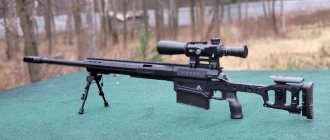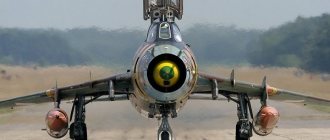The Russian Aerospace Forces will protect cities and important facilities with “anti-aircraft transformers”. The Ministry of Defense has made a fundamental decision to modify the S-400 Triumph and S-300 air defense systems, sources in the military department told Izvestia. Now their launchers in combat will be able to hit targets simultaneously with several types of missiles - both ultra-long-range and short-range with high maneuverability. You can choose ammunition depending on the tactical situation. Currently, the S-300 and S-400 are equipped with only one pre-selected type of missile. To change it, the combat vehicle must be taken out of position and reloaded. The modified systems will radically increase the capabilities of domestic air defense and will make it possible to create a layered defense to defeat any targets, experts say.
“Favorite” versus “Triumph”: S-300PMU2 and S-400 compared with each other
They will strengthen the country's air defense and provide the ability to deter Israel and Western countries. The new air defense systems are much more modern than the S-200, received by the Syrians in the 1980s, and exceed the capabilities of Western analogues, for example, the American Patriot complexes. Yet the S-300PMU2 lags significantly behind the more modern Russian S-300V4 and S-400 Triumph, as well as the Chinese HQ-9B.
If the “Favorites” fail in Syria, this will not pose a threat to Russia, because its air defense system is based on complexes and systems created much later, writes Military Watch Magazine.
A comparison of the S-300PMU2 air defense systems that the Syrians will receive with the S-400 deployed by Russian military personnel in Syria shows that the systems are significantly different from each other.
“Favorit” is capable of simultaneously hitting 36 targets, including cruise and ballistic missiles, as well as aircraft, using a pair of interceptor missiles for each. The maximum range for hitting targets is 195 kilometers. According to rumors, modernization has made it possible to increase it to 250 kilometers, but there is no official confirmation of this information. The S-300PMU2 are designed to destroy targets at medium and high altitudes, so the air defense systems themselves are dependent on specialized short-range systems, such as the Buk-M2, S-125 or Pantsir-S1.
The S-400 began to operate in 2007 - 10 years after the S-300PMU2 air defense system was introduced. The range of capabilities of the Triumph has significantly expanded compared to the Favorite. The new anti-aircraft system can hit twice as many targets simultaneously - up to 80. The number of missiles aimed at targets at a time has increased to 160. The maximum engagement range is 400 kilometers, the detection range is up to 600 kilometers. Unlike its predecessor, the S-400 can shoot down targets at altitudes from 5 meters to 30 kilometers. That is, the air defense system is capable of destroying not only missiles and aircraft, but also helicopters, and at long ranges. Triumph's high-precision missiles fly at hypersonic speed, which allows the system to destroy any enemy aircraft in a matter of minutes.
The S-300PMU2 system is capable of detecting and hitting stealth aircraft, but the more modern S-300V4 and S-400 cope with these tasks better. The ability of the Favorite to shoot down the American fifth-generation fighter F-22 Raptor, which boasts high speed, excellent maneuverability and the presence of electronic warfare systems, is being questioned. Against the slower and less stealthy F-35, the S-300PMU2 has a much better chance. However, a “meeting” of Syrian anti-aircraft missile systems with the F-22 is unlikely - most likely, they will have to face the F-35 and various fourth-generation aircraft.
So, the S-300PMU2 lags quite far behind not only the S-400, but also the more modern variants of the S-300. This suggests that Moscow is increasing its military support to Damascus, but this situation is far from the escalation of the early 1980s, when the USSR transferred to Syria some of the most modern air defense systems at that time. And yet, the Favorite is a serious threat to fourth-generation aircraft, which, for the most part, make up the Israeli and NATO air forces. In addition, they are dangerous for more modern F-35s.
Hybrid defense
The modernization will affect the newest variants of the S-300 anti-aircraft missile systems (SAM) currently in service with the troops - the S-300PM. Medium-range ammunition with active homing heads will expand the capabilities of systems equipped with conventional 48N6 and ultra-long-range 40N6. The use of such a kit has already been tested at the 185th Center for Combat Training and Combat Use of the Russian Aerospace Forces. Instead of each transport and launch container, it will be possible to install four with smaller 9M96 medium-range missiles.
For Triumphs, modifications will require installation of an early release. New and export versions already have the ability to combine ammunition. Recently, the Turkish Ministry of Defense distributed photographs from the preparatory stage for the exercises, in which they plan to use the S-400. On one of the transport and launchers, two types of anti-aircraft missiles of different ranges are visible simultaneously.
Anti-aircraft position: the military united air defense systems into a single circuit
At the Caucasus-2020 exercises, air defense units of the Ground Forces, Aerospace Forces and Navy worked together
Combining different ammunition on one launch pad will make it possible to use missiles more efficiently, noted former deputy commander-in-chief of the Air Force for the CIS Unified Air Defense System Aitech Bizhev.
“Such a system is needed so as not to waste expensive ammunition on less important targets,” he told Izvestia. — The decision to use one or another type of missile is made depending on the range and class of the air target. Why use long-range ammunition at 50 km if the target can be shot down with a close-range missile? To destroy a light aircraft or strategic bomber, it is also desirable to have different means. Well, when there is a massive raid, missiles of all ranges will come in handy. Technically, implementing such a project is not difficult. The control system is the same, only the propulsion engines and combat units are different.
On old complexes, semi-active homing heads were used, added Aitech Bizhev. When the target was irradiated with radar, the missile saw the reflected signal and followed it. With an active head she is more independent. Such ammunition has higher targeting reliability and the probability of destroying a target is close to 99%.
Now, to intercept small targets such as helicopters or drones, S-400 regiments include batteries of Pantsir anti-aircraft missile and gun systems. They protect long-range systems on the move and in positions, increase their fire performance and allow you to avoid wasting heavy long-range missiles on low-priority targets. There are no such units in the units armed with the S-300.
CYPRUS CONTRACT
Almost simultaneously, another epic related to the “300” unfolded very close to Yugoslavia: Russia decided to sell it to Cyprus. Moreover, the air defense of this country at that time was very far from even the Yugoslav level. It was armed with only three batteries (12 launchers) of the Italian Aspid short-range air defense system, fifty Soviet and French Strela-2 and Mistral MANPADS, and a number of Swiss small-caliber anti-aircraft guns. The Cypriots never even dreamed of fighter jets (and still don’t dream of them).
Nicosia's acquisition of the S-300 created a situation described by the famous phrase “No pants, but a hat.” In fact, the “three hundred” from Cyprus could theoretically shoot down planes over the territory of its main enemy – Turkey. Ankara has officially stated that it will destroy the S-300 immediately after it is deployed in Cyprus. And she really would have done it - because in this situation the “three hundred” would have turned out to be an even bigger “thing in itself” than in Yugoslavia.
Since Cyprus never had any RTVs, the Turks most likely would have struck with impunity, since the S-300 would not have even had time to turn on. But even if somehow it could be brought into combat readiness, Turkey would simply sacrifice several old F-4s and F-5s. “Trekhsotka” would have spent missiles on them, after which it would have been destroyed with impunity by Turkish F-16s. Anti-advertising for the S-300 would be colossal; no one would be interested in the fact that the air defense system was simply placed in such conditions. As a result, the Greeks (NATO members) took the “three hundred”, deploying it in Crete (then the US and Israeli Air Forces trained very well on them), and Cyprus was instead given six Tor-M1 short-range air defense systems.
Now, very close to Cyprus, another S-300 epic is taking place - the Syrian one.
Almaz-Antey and former general director Igor Ashurbeyli
OJSC GSKB Almaz-Antey is an enterprise engaged in the development and production of weapons. As Igor Ashurbeyli said, work is mainly carried out in several areas: air defense, missile defense and aerospace defense, as well as the creation of anti-aircraft missile systems and complexes. The headquarters is located in Moscow. The specialization of the enterprise is, as Igor Ashurbeyli said, in the production, development and modernization of anti-aircraft missile and radar equipment and its components. Particular attention is paid to air defense systems. Also among the tasks of the enterprise are implementation, work to support the operation, repair and disposal of used weapons. The complex serves the needs of state federal systems. Weapons are being actively developed. Igor Raufovich Ashurbeyli served as CEO from 2002 to 2011.
YUGOSLAV LAANINGS
Since the S-300P was conceived as an integral part of the country’s air defense system, within this system all of the listed shortcomings were more or less leveled out. Its radar did not need to be constantly working, for this there were RTVs, they were also supposed to detect low-flying targets and issue preliminary target designation for them. The low reload speed was compensated by the presence of a large number of missile defense systems ready for launch, a large dead crater - by mutual covering of each other by divisions of the same regiment. In addition, different regiments insured each other, as well as other air defense systems. But when the “three hundred” began to be “taken out of context” and made into an “independent quantity” (and even in stripped-down versions - one or two divisions per regiment, with 4–8 launchers in each instead of three to five divisions with 12 launchers each), then the shortcomings inevitably began to appear.
The first time this happened was in connection with the NATO aggression against Yugoslavia in the spring of 1999. Then a howl from the patriotic public rose above Russia: “Why aren’t we sending the S-300 to Yugoslavia?!” Interestingly, the echoes of this howl can still be heard, although in 20 years it was possible to understand at least something.
The S-300P in any modification consists of many multi-ton, multi-meter vehicles. Therefore, it is extremely difficult to transport it by air even in calm conditions: the An-124 “Ruslan” can accommodate no more than two vehicles from the “three hundred” at a time, so to transport at least one division you need many “Ruslans” or a lot of time. And any other transport aircraft of the Russian Aerospace Forces are simply useless here. In conditions of complete air supremacy of NATO aviation, which was capable of simply disabling the runways of any Yugoslav airfield, such an operation was fundamentally impossible.
It was possible to transport the S-300 by sea. True, it is quite slow because it is far away. By the time the Russian ships with the “three hundred” would have reached the Yugoslav ports, NATO would have more or less bombed everything. And even if the Russian ships reached the Yugoslav (Montenegrin) ports and the NATO Navy would let them through, this would be the end of the epic. Multi-ton, multi-meter vehicles, which have no structural protection and no defensive weapons of their own, would be destroyed by NATO aircraft right in the port. Or, as a last resort, on the march towards the deployment area. The “300” had no chance of reaching this area, turning around there and putting itself in a state of combat readiness, even theoretically. Simply because Yugoslavia did not have full-fledged air defense to cover all these operations.
For this same reason, the S-300P would have turned out to be practically useless if several of its divisions (two or three regiments, there simply could not have been more) had appeared in Yugoslavia before the start of NATO aggression (in political terms, the question is why they were not there appeared before the start of aggression, it should be addressed to the late Milosevic, and not to the late Yeltsin). The rest of the air defense of Yugoslavia was too weak and primitive, so the S-300P became a kind of “thing in itself”, without protection either “from above” (from fighters) or “from below” (from other air defense systems). And to suppress it, the Americans would simply need several dozen additional Tomahawks. Even with ideal crew work, the “three hundred” would have spent all the missiles destroying these Tomahawks, and no one would have given it a chance to reload. But the patriotic public is howling even now, not understanding all this at all.
"Pantsir" will cover "Prometheus" from drones and saboteurs
The S-500 system, which tracks hypersonic missiles and satellites in space, could itself become the target of an attack. The fact that in the event of war the “Prometheans” will be hunted - don’t go to a fortune teller. After all, only by destroying the S-500 will it be possible to break through a corridor in our air defense system. Troubles can be expected from attack drones, cruise missiles, and even sabotage squads. The system itself, configured for a far zone, will not be able to cope with such threats. For protection, each S-500 regiment will include a Pantsire-SM division.
Now it’s the same in S-400 divisions: during exercises with the deployment of Triumph, a Pantsir-S is always nearby. The antennas of its locators rotate constantly; the Pantsirs were responsible for tracking and destroying small targets - drones and small helicopters conducting terrain reconnaissance.
This will be the case during S-500 operations. Moreover, the Pantsir-SM (modernized) is a more modern and powerful machine. The target detection range has increased from 40 to 70 km. The same goes for the destruction range - for a regular Pantsir it is 20 km, and for a modernized one it is 40 km. The ammunition load of the improved air defense missile system will include relatively cheap, small-sized ammunition, which will make it possible not to count the cost of destroying light drones and unguided missiles. And for combat with sabotage detachments, the Pantsir-SM has two rapid-firing 30-mm machine guns, adapted for firing even at lightly armored vehicles.
